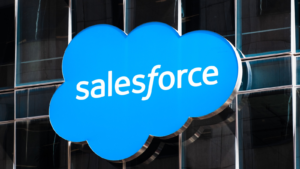We’ll cover each of these stocks’ cloud platforms and software and why their unique services and products put them in a fantastic position to prosper amidst the exponential growth in demand for cloud computing.
Snowflake (SNOW)

Snowflake (NYSE:SNOW) offers companies an essential line of security and allows for seamless management of the massive amounts of data they store in the cloud. Snowflake’s software is highly relevant to any business looking to integrate cloud computing into its network, and as a result, It saw massive success in its early days.
The stock has settled since its initial roaring growth but continues to perform exceptionally well. In Q4 of fiscal 2024, Snowflake reported 32% revenue growth year-over-year and a backlog of $5.2 billion in performance obligations. The company’s loyal customers include 691 companies in Forbes Global 2000.
The company has a healthy cash flow and a net revenue retention rate of 131%. It is valued reasonably, and this month is an excellent opportunity to buy before the company’s Q1 report, scheduled to be released on May 22.
While Snowflake is still relatively new, its relevancy and demand are undisputable. The stock may experience short-term ups and downs but will almost certainly prove lucrative in the long run. Spending on cloud computing is only expected to increase, and as Snowflake continues to improve its platform, customers and their stock prices will increase.
Salesforce (CRM)

Salesforce (NYSE:CRM) has been a central player within cloud computing for some time now. As one of the most predominant CRM software platforms and enterprise collaboration software providers, Salesforce holds a magnificent position in today’s market.
The company is in excellent form, reporting Q4 revenue of $9.29 billion and remaining performance obligations of almost three times that in fiscal 2024. The company expects continued success with guidance for 2025, including a GAAP operating margin of 20.4% and operating cash flow growth of 21% to 24% year over year.
Salesforce continues to expand its reach within the cloud sector with acquisitions and investments from smaller companies. Salesforce entered team collaboration software when it acquired Slack in 2021. It has since invested in cloud computing companies like Snowflake and cloud AI start-ups and continued a partnership with Amazon Web Services (AWS).
Through its development and growth, Salesforce has overcome the volatility it faced in 2022 and has seen relatively consistent growth since the beginning of 2023. The stock is on the dip but will undoubtedly bounce back after another successful year.
Adobe (ADBE)

Although Adobe (NASDAQ:ADBE) initially gained popularity as a provider of creative software, the company has ventured into cloud computing in a big way. Adobe has made several acquisitions over the last few years to diversify its platform and appeal to a broader demographic.
Adobe acquired e-commerce giant Magneto and supplemented its platform with Workfront’s workflow software and a longstanding partnership with tech giant Nvidia. The company also implemented generative AI into its popular creative suite platform, Firefly, to expand the imaginative possibilities exponentially.
Abode has seen excellent growth and performance from its diverse offerings, including $5.18 billion in revenue in the first quarter of fiscal year 2024 €” Adobe’s cloud software for documents generated $750 million. The company also reported a healthy cash flow of $1.17 billion.
Given its market position and extensive connections, investors should consider Adobe one of the top options in cloud computing and buy while its price is below the running average.
On the date of publication, Joel Lim did not have (either directly or indirectly) any positions in the securities mentioned in this article. The opinions expressed in this article are those of the writer, subject to the InvestorPlace.com Publishing Guidelines.
Joel Lim is a finance freelance writer who writes content for several companies like LTSE and Realtor, along with financial publications, including Mises Institute and Foundation for Economic Education.
